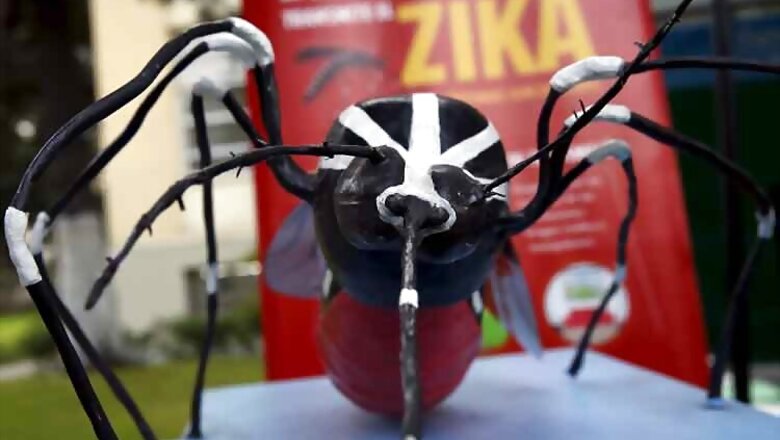
views
Paris: Scientists have said they had found the first evidence of a biological link between the Zika virus sweeping Latin America and microcephaly, a severe deformation of the brain among newborns.
Laboratory tests found that the virus targeted key cells involved in brain development and then destroyed or disabled them, they said.
The findings are the first concrete evidence of a link between the mosquito-borne virus and microcephaly, which until now had been circumstantial, said Guo-li Ming, a professor of neurology at The Johns Hopkins Institute for Cell Engineering, and a co-leader of the research.
"Studies of foetuses and babies with the telltale small brains and heads of microcephaly in Zika-affected areas have found abnormalities in the cortex, and Zika virus has been found in the foetal tissue," he said in a statement yesterday.
Scientist exposed three types of human cells in a lab dish to the Zika virus, a method called in-vitro experiment. The first -- known as human neural progenitor cells (hNPCs) -- is crucial for the development of the cortex, or outer layer, of foetal brains.
Damage to these cells, which eventually differentiate into mature neurons, would be consistent with the brain defects caused by microcephaly. The other two types of cells were stem cells and neurons.
As predicted, Zika virus attacked the human neural progenitor cells. Within three days of exposure, 90 per cent were infected, and nearly a third had died. Infected cells, meanwhile, had been hijacked to turn out new copies of the virus.
Furthermore, the genes needed to fight viruses failed to activate, which was a highly unusual outcome. By comparison, the other two types of human cells were relatively unharmed.
"Our results clearly demonstrate that Zika can directly infect hNPCs in vitro with high efficiency," the study concluded.
"It is very telling that the cells that form the cortex are potentially susceptible to the virus," Ming added.
The findings, published in the journal Cell Stem Cell, may help to identify drugs that protect these vulnerable cells or reduce infections after they occur.
"Now that we know cortical neural progenitor cells are the vulnerable cells, they can likely also be used to quickly screen potential new therapies," said co-author Hongjun Song, also from the Institute for Cell Engineering, based in Baltimore, Maryland.
By itself, Zika is typically no more threatening than a bad cold or a mild case of the flu. Sometimes there are no symptoms at all.



















Comments
0 comment